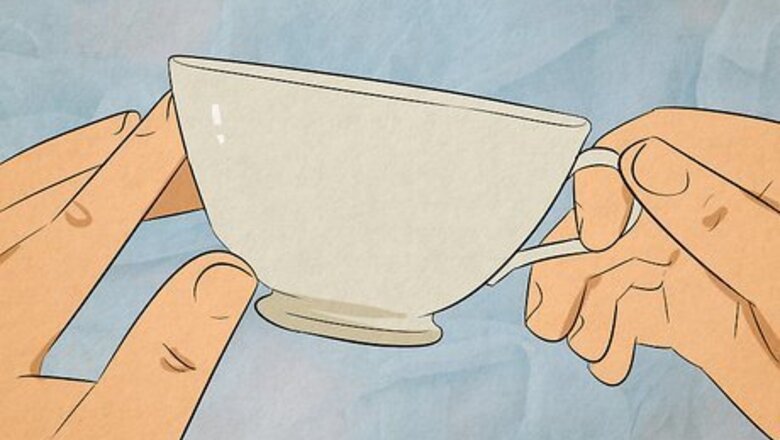
views
- Choose a white, shallow teacup and use a tea mixture with broad leaves like gunpowder tea or with chunks of herbs and spices.
- Let the tea steep in hot water, then drink it. Flip the cup over onto a saucer and think about the question you want to ask, then flip it back over.
- Point out the numbers, letters, or symbols you see and consider how they relate to your question. It’s all up to interpretation—trust your instincts and have fun!
Preparing for the Reading

Choose a white tea cup with a handle below the rim. Pick a cup that's shallow, wide, and curved—a mug that’s long and cylindrical might not let the tea reach the different areas of the cup as well as a teacup will. Try to use a teacup that’s completely white on the inside so you can accurately read the tea leaves. Some teacups designed for tea readings have symbols already in the cup, but it’s not necessary and might be confusing if you’re just starting out. If you have a teacup with a circle of leaves or another pattern dividing half of the inside of the cup, that would work well too.
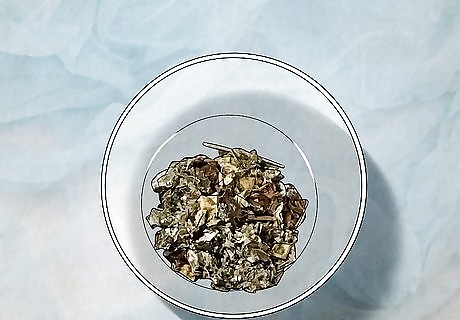
Select a tea with broad leaves or chunks of fruit, herbs, and spices. Choose a loose-leaf tea with defined leaves—cutting open a teabag might give you tea that’s too powdery and fine. While larger tea leaves may be heavy and escape the cup when flipping it, finer leaves might turn into a paste. You can also try choosing a tea with different mediums, like distinguishable twigs, fruit, and herbs, which can give you more defined shapes. Oolong, green tea, or gunpowder tea work well for readings, but you can use any tea you like. If you don’t like tea, you can also use larger coffee grounds.
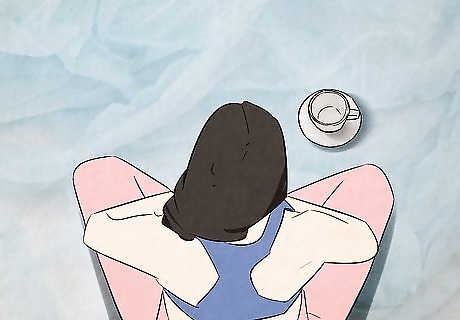
Ground yourself by practicing meditation. The atmosphere you set can set the tone for the reading. Mentally prepare by engaging in deep breathing or meditation to calm your mind and feel present in your body. Pay attention to what you see, smell, hear, feel, and taste and let peace come naturally. Turn on music, burn a candle, or light incense to help set the tone for your reading through your senses. Try the 5-4-3-2-1 technique: name 5 things you see, 4 things you feel, 3 things you hear, 2 things you smell, and 1 thing you taste to help you focus on the present moment.
Making the Tea

Place about a teaspoon of tea leaves into the cup, then add hot water. Depending on the size of your teacup, you can add a little more or take away some—you don’t need a ton of tea leaves to get a good reading. Boil water in a kettle or on the stove, and then fill the cup about ¾ of the way with hot water. You can also put your tea leaves in your kettle, as long as it doesn’t have a strainer built-in. Pour your tea, then add an additional pinch of leaves to your cup.

Let the tea steep for 3 minutes and think of a question to ask. Formulate a clear, concise question that you want to ask your tea leaves. You might ask if you’re going to get that new job you’ve been hoping for if that guy you’ve been eyeing in your class likes you back, or how you can live your life with greater purpose. Think about what’s important to you—the more specific the question, the more accurate the answer may be. If you’re doing this reading for someone else, ask them to think about the question they want to ask as the tea steeps. Some tea readers recommend adding milk, honey, sugar, or whatever else you enjoy to your tea. Others believe that this can ruin the tea leaves or make it difficult to read. Trust what your intuition tells you that you need in the present moment.

Drink the tea, using your teeth and lips as a strainer. Think about your question as you sip, reflecting on your intentions and focusing all your energy on the tea leaves. Leave the majority of the tea leaves along with about a teaspoon of water at the bottom of the cup. Make sure you let the tea cool completely before drinking. If you swallowed a few tea leaves, that’s completely fine—it just means that they were never meant to be part of the reading.
Flipping the Teacup

Flip the saucer on top of your teacup and then turn both over. Hold the cup in your left hand and swirl the tea three times. Move the cup from left to right as you swirl. Flip the saucer over on top of your teacup. Flip both over so that the teacup is resting upside-down on top of the saucer. Let the excess liquid flow out of the cup into the saucer. You can place a paper towel, napkin, or cloth on top of your saucer or plate to absorb the liquid from the cup as it drains out.
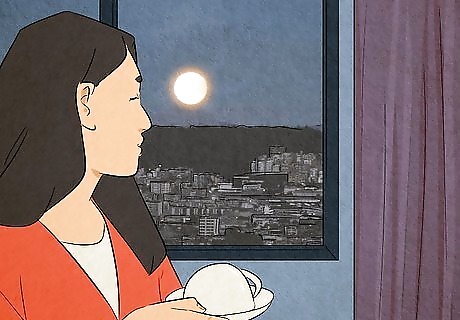
Leave the cup upside-down for 1 minute, thinking about your question. Rotate the upside-down teacup three times clockwise on the saucer as you focus on your intention. Once you finish your rotations, tap the bottom of the cup three times. Why 3? All over the world, 3 is believed to have magical significance. Past, present, future; beginning, middle, end; intention, performance, fruition—this magical cycle of 3s can help you answer your question.

Flip the cup back over with the handle facing the left. The handle is believed to be the energy conduit that connects the physical and spiritual realms. The triangle of space in the cup underneath the handle is where you can find the answers to your question. Feel free to turn or move the cup around after you flip it right-side up—the direction of the handle is just to orient you to where you should focus first. If leaves fall as you turn the cup, that’s okay—they’re just going to where they belong in the cup. You can also start with the handle facing you or facing south—whatever feels most comfortable and meaningful for you in the moment.
Interpreting the Tea Leaves
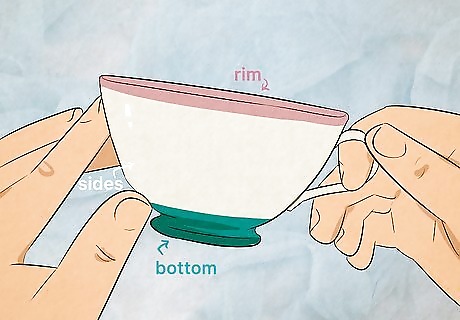
Divide the cup into three sections—the rim, the sides, and the bottom. If you’re doing a past/present/future reading, assign the bottom as the past, the sides as the present, and the rim of the teacup as the future. If looking at a specific issue, assign the rim as surface issues (I missed the bus this morning), the sides as deep issues (I have difficulty keeping track of time), and the bottom as the root issues (I’m afraid of failure). Depending on the question, these three zones of the teacup can also be used to tell how soon the situation is likely to occur, the physical or symbolic distance between two people, or the intensity of the event. You can get a timeline for the outcome you’d like to happen by dividing the cup into quadrants. Draw an imaginary line out across the cup from the handle, and another one 90°. The upper left fourth is 0-3 months, the next clockwise fourth is 3-6 months, and so on.
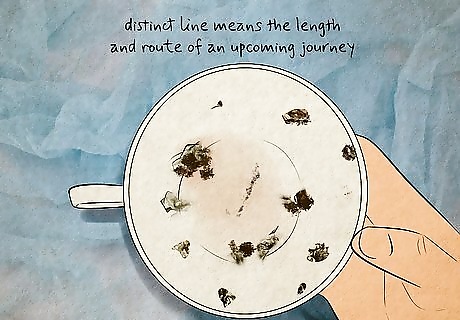
Look for symbols, shapes, numbers, or letters. Whatever you see in the cup is up to interpretation—you get to decide what makes sense to you. For example, if your question is, “Will I get the job I interviewed for?” and you see a train, you may think of travel or wealth, which may mean that the answer is “Yes.” If you’re not ready to go with your gut instinct quite yet, here are guidelines you can apply: If defined shapes are closer to the handle, it might mean that something is happening to you more in the present than the past. If the small leaves and dust form a distinct line, it might show the length and route of an upcoming journey. If a shape is made out of dark leaves, it might be an omen, while a shape made from the negative space of the white cup is positive. If you see letters in your cup, a capital letter might point to a place while a lowercase letter might signify a name. Try not to panic if the reader sees a bad omen in your future—remember that the future is yours to change after the reading is over, and just the knowledge that something might happen can be enough to change the outcome. If you’re reading for someone else, say what you see as you look at the cup. What might mean nothing to you might mean everything to the person you’re reading for.
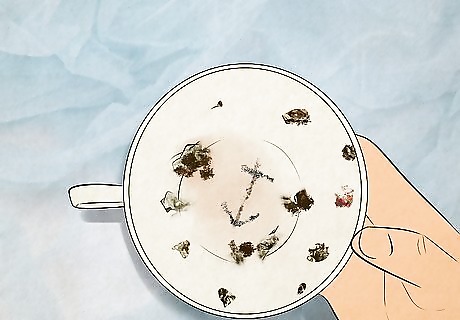
Use a dictionary to figure out what symbols mean. If you’re just starting out, it might be daunting to use your own interpretation—you can also tea leaf symbol dictionary to help you do your reading. Here are the basic common symbol meanings: Acorn: You will experience continued or improved health. Anchor: A lucky symbol. You may find more success in business or love. If the symbol is blurred or indistinct, the meaning is reversed. Ants: There may be difficulties to overcome before you can reach your goal. Banana: A symbol of good luck. Birds: A message of good luck. If the bird is flying, good news comes from the direction it comes from. If at rest, a fortunate journey lies ahead. Castle: You will come into an inheritance. Clover: You will be blessed with good fortune and happiness. Door: Something unusual is about to happen. Elephant: You will soon find good luck, good health, and happiness. Hammer: Your hard work will pay off soon. Heart: An existing romance will grow stronger. Heavenly bodies (stars, suns, planets, moons, etc.): A symbol of good luck. You are on your way to finding great happiness and success. Moon (crescent): A symbol of prosperity and fame. If the symbol is cloudy, any difficulties blocking your path will be resolved. Palm tree: A good omen. You will find success in any undertaking. For those who are single, marriage may be in your future. Snake: You may encounter enemies and minor misfortune. If this symbol appears next to or inside of a square, this can be avoided. Tornado: Watch out for disaster and misfortune. Triangles: You will fall into unexpected good fortune. Windmill: This can be an indication of success in business. Owl: You may experience sickness or poverty in the near future. Take this sign as a warning against starting a new venture.















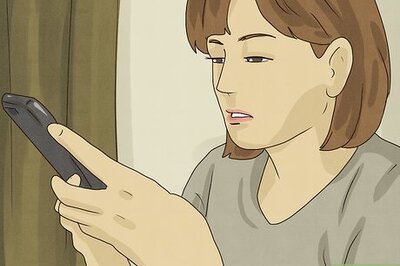
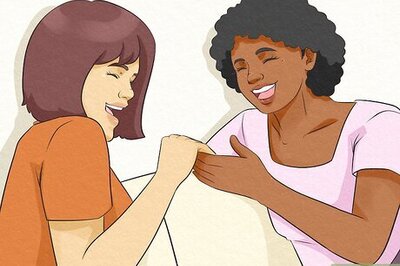


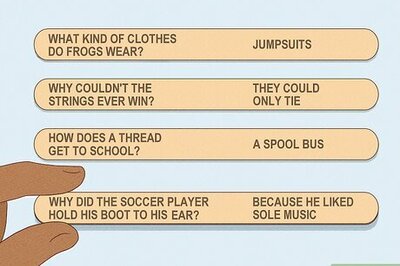
Comments
0 comment